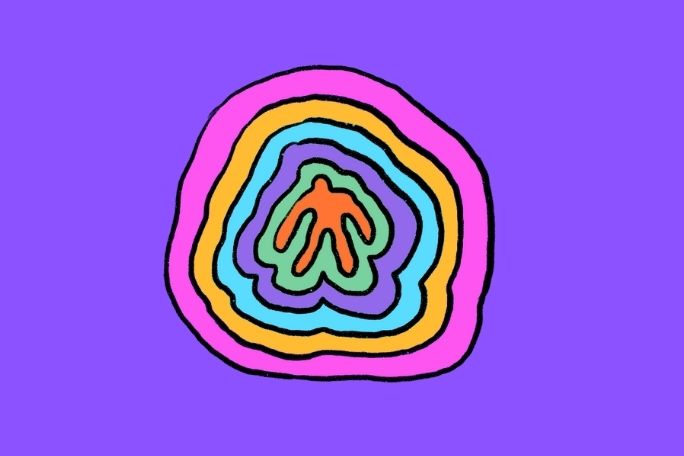Lesson summary
In this lesson, students will investigate how labels are used to identify things and people. They will consider the impact of labelling people and explore the potential for labels as an empowering force. Students will investigate how symbols and images can help us communicate identity alongside labels and they will create their own visual representation of their unique identity. Students will consider how they choose to present their identity to the world, including the parts they wish to remain secret. They will reflect on how their use of labels can affect others.
Learning intentions:
Students will...
- understand how labels are used to identify things and people
- understand the positive and negative impact of labelling people
- consider the potential benefits of owning their labels.
Success criteria:
Students can...
- use symbols and images and express their identity
- write a biography that expresses their identity
- communicate empathically and sensitively with others.
Lesson guides and printables
Lesson details
Skills
This lesson is designed to build students’ competencies in the following skills:
- Communication
- Cultural understanding
- Empathy
- Ethical behaviour
- Social skills
Curriculum mapping
Years 9 & 10 HPE:
- Evaluate factors that shape identities and critically analyse how individuals impact the identities of others (ACPPS089).
- Critique behaviours and contextual factors that influence health and wellbeing of diverse communities (ACPPS098).
Years 9 & 10 Visual Arts:
- Plan and design artworks that represent artistic intention (ACAVAM128).
This lesson is part of a wider program: IMAGI-NATION{TV}
Level of teacher scaffolding: High – due to the sensitive and personal nature of the topics explored, teachers will need to keep a close eye on all conversations and monitor student safety and wellbeing
Syllabus outcomes: PDHPE5.1, PDHPE5.13, VAS5.5
General capabilities: Literacy, Personal and Social Capability, Ethical Understanding, Intercultural Understanding
Cross-curriculum priority: Aboriginal and Torres Strait Islander Histories and Cultures
Tips for teachers: This lesson is designed to be flexible for use with various year levels and across the curriculum. It can easily be tailored or expanded to focus more deeply on the skills that students are exploring in their classroom context. For example, art teachers could focus more on visual representation of identity and HPE teachers could focus more on the social impacts of negative labelling.
Additional info
This lesson has been developed in partnership with AIME. AIME is an Imagination Factory that since 2005, has been creating pop-up Imagination Factories on university campuses around the world to unlock the internal narrative of marginalised kids, taking them from a world that tells them they can’t to a world that tells them they can. Kids who experience the Imagination Factory have gone on to achieve educational parity, rise up as entrepreneurs, and take on a whole new mindset that prepares them for success.
AIME created IMAGI-NATION{TV} & the IMAGI-NATION{CLASSROOM} experience to put a mentor in the home every day during the tough times of COVID-19 and beyond. It’s a daily TV show broadcast live on the internet, and it’s a gift for teachers, parents and kids to help make sense of today and imagine tomorrow.
The pursuit is to elevate knowledge; every guest we bring on knows something and has wisdom to share. This show is not just about entertainment to pass the time. We want to remake the mould for the modern hero – from beauty to brains, from selfies to self-knowledge, from hashtags to hope. IMAGI-NATION{TV} is seeking to unlock the best in every single one of us; to inspire a generation of heroes in the form of mentors who fight for a fairer world.
Resources required
- Blank A4 paper
- Device capable of presenting a video to the class
- Handling Sensitive Topics and Issues Factsheet
- Student Worksheets – one copy per student


Welcome back!
Don't have an account yet?
Log in with:
By signing up to Cool.org you consent and agree to Cool's privacy policy to
store, manage and process your personal information. To read more, please see
our privacy policy here(Opens in new tab).
Create your free Cool.org account.
Many of our resources are free, with an option to upgrade to Cool+ for premium content.
Already have an account?
Sign up with:
By signing up to Cool.org you consent and agree to Cool's privacy policy to
store, manage and process your personal information. To read more, please see
our privacy policy here(Opens in new tab).